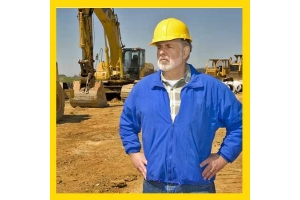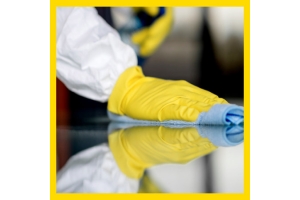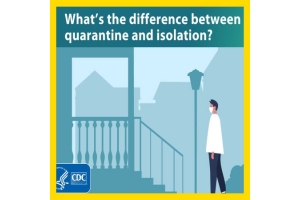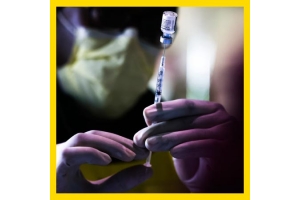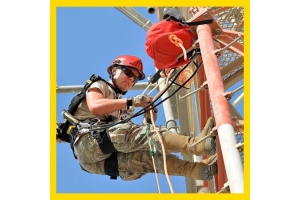Currency
-
July 26, 2020On July 21, 2020, OSHA announced that two Ohio nursing facilities would receive citations for failing to protect their employees against coronavirus. The healthcare company OHNH EMP LLC received a violation for failing to provide respiratory protection standards for their employees after seven employees reported coronavirus-related hospitalizations.
OSHA inspected three OHNH EMP facilities in Ohio: Pebble Creek Healthcare Center in Akron, Salem West Healthcare Center and Salem North Healthcare Center in Salem. OSHA cited each location for a serious violation of two respiratory protection standards: failing to develop a comprehensive written respiratory protection program and failing to provide medical evaluations to determine employees’ ability to use a respirator in the workplace.
OSHA also issued a Hazard Alert Letter regarding the company’s practice of allowing N95 -
July 26, 2020London — Despite the ongoing COVID-19 pandemic, 1 out of 14 workers say they’d go to work even if they feel sick and regardless of how severe their symptoms are, results of a recent survey show.
Commissioned by Thermalcheck, a manufacturer of no-contact temperature check stations, marketing research company OnePoll surveyed 2,000 U.S. workers to learn how they’d handle their health when returning to the workplace during and after the pandemic. Nearly half said they feel pressure from their boss to go to work when sick. Feeling guilty was the leading motivator to work while sick.
Other findings:
● 33% of the respondents said they’d keep working with cold or flu symptoms because they’d miss their colleagues, along with office banter and gossip.
● More than one-third said they don’t usually consider their co-workers’ health when deciding to go to -
July 26, 2020In a break with the federal Occupational Safety and Health Administration (OSHA), Virginia became the first state to adopt an emergency temporary standard (ETS) for coronavirus disease 2019 (COVID-19). Virginia’s COVID-19 ETS applies to every employer in the state, unlike California’s Airborne Transmissible Disease (ATD) standard, which only applies to correctional facilities, funeral homes and mortuaries, hospitals and other healthcare facilities, and public services.
COVID-19 is a respiratory illness caused by the SARS-CoV-2 virus. COVID-19 currently is widespread in most U.S. communities and considered a workplace hazard.
The ETS establishes requirements for employers to control, prevent, and mitigate the spread of SARS-CoV-2 among employees. The ETS takes effect as soon as it is published in a Richmond, Virginia, newspaper, with the exception of the standard’s training requirements, which take effect 60 days after the rule’s effective date. The ETS expires within -
July 26, 2020For our returning US workforce, recognizing employees’ personal comfort on the job has never been more significant — especially for at-risk employees.
As the economy continues to reopen and companies across the country return to work during the ever-pressing COVID-19 pandemic, employers and employees alike are looking for more methods to deal with working in a “new normal.” For workers who require proper safety apparel — e.g. those in manufacturing, healthcare, food services, production, construction and machinery operation industries — this will include new ways to comfortably endure standing on one’s feet for long periods of time, while still practicing safe social distancing.
Health concerns
For employees who have returned or are soon returning to work, health concerns are especially high for those who fall into the older age brackets or are -
July 20, 2020THURSDAY, July 16, 2020 (HealthDay News) -- Lockdown measures helped reduce the number of COVID-19 cases in countries around the world, a new study finds.
Moreover, earlier stay-in-place restrictions such as closing schools and workplaces were tied to a greater reduction in cases, according to British researchers.
The findings, published July 15 in the BMJ, were based on data from 149 countries and regions.
"These findings might support policy decisions as countries prepare to impose or lift physical distancing measures in current or future epidemic waves," study co-author Nazrul Islam said in a journal news release.
Islam is a research fellow and medical statistician at the University of Oxford.
He and his team compared new cases of COVID-19 before and up to 30 days after the introduction of physical-distancing measures, such as restricting -
July 19, 2020
Introduction
A substantial number of face masks, claiming to be of KN95 standards, provide an inadequate level of protection and are likely to be poor quality products accompanied by fake or fraudulent paperwork. These face masks may also be known as filtering facepiece respirators.
KN95 is a performance rating under the Chinese standard GB2626:2006, the requirements of which are broadly the same as the European standard BSEN149:2001+A1:2009 for FFP2 facemasks. However, there is no independent certification or assurance of their quality and products manufactured to KN95 rating are declared as compliant by the manufacturer.
Personal protective equipment (PPE) cannot be sold or supplied as PPE unless it is CE marked. The only exception is for PPE that is organised by the UK Government for use by NHS or other healthcare workers where assessments have been undertaken by HSE as the Market Surveillance Authority.
-
July 19, 2020A recent article by the New York Times gives readers an understanding how events have unfolded since the doctors first detected the coronavirus in Wuhan, China. For many, this pandemic has felt like it has lasted much longer than six months, but you might be surprised at the notable events (good or bad) that have happened in a short amount of time.
The Times’ coronavirus timeline walks you through the pandemic’s notable events, starting with Chinese authorities treating dozens of cases of an unknown pneumonia in December 2019 until current day, when Brazil’s president tests positive for the virus in July of 2020.
The coronavirus has covered all corners of the globe and affected nearly every facet of life including the global economies, politics, education, workplace culture, pandemic planning, retail, the healthcare industry and much more. The world has gone from one confirmed, official death in China on January 11 to nearly 544,200 in less than a year.
-
July 19, 2020Response Initiative is an online platform that serves as an intermediary between buyers and sellers of PPE and other medical supplies, allowing companies to register at no cost.
Dubai Chamber of Commerce and Industry has launched Response Initiative (RRI) to help ease the growing demand for personal protective equipment (PPE) among businesses and healthcare providers as they continue to deal with the impact of COVID-19.
RRI is an online platform that serves as an intermediary between buyers and sellers of PPE and other medical supplies. Companies that buy and sell PPE and medical equipment can register at no cost.
The platform was initially launched with 15 approved suppliers from the UAE providing a wide range of products, including surgical and reusable facemasks and shields, safety goggles, hand sanitizer, disposable gloves, medical gowns and coveralls, -
July 12, 2020The government have announced a relaxation of the guidelines around working on site for many industries. So, we've complied some handy information to help you keep your facility clean and hygienic during the Coronavirus crisis.
Given how infectious the COVID-19 virus is, there is now an even greater focus on keeping workplaces clean. The government’s recent announcement of a phased relaxation of social distancing rules means that people are gradually returning to work. Therefore, it is more important than ever that we, as employers, do all we can to ensure our facilities comply with guidelines around hygiene and cleaning. There is a wealth of information out there, so to help you protect your workforce quickly and effectively, we have we have compiled a selection of the measures that we think are most relevant. We have also given a few examples of things we are doing here at A-SAFE to keep our essential workers safe at this time.
In this guide we will explore:
-
July 12, 2020OSHA has issued Frequently Asked Questions that explain the differences between cloth face coverings, surgical masks and respirators.
The resource is extensive, but some highlights include:
Cloth face coverings do not constitute personal protective equipment. Surgical masks are not considered to be PPE if they are being used solely to contain the respiratory droplets of the person wearing them (referred to by OSHA as “source control”). Although employers are not required to provide their employees with cloth face coverings or surgical masks, the use of such face coverings and/or surgical masks would constitute part of “a control plan designed to address hazards from SARS-CoV-2” under the General Duty Clause.
OSHA suggests following CDC guidance on washing face coverings. OSHA explains, “Employers may choose to use cloth face coverings as a means of source


